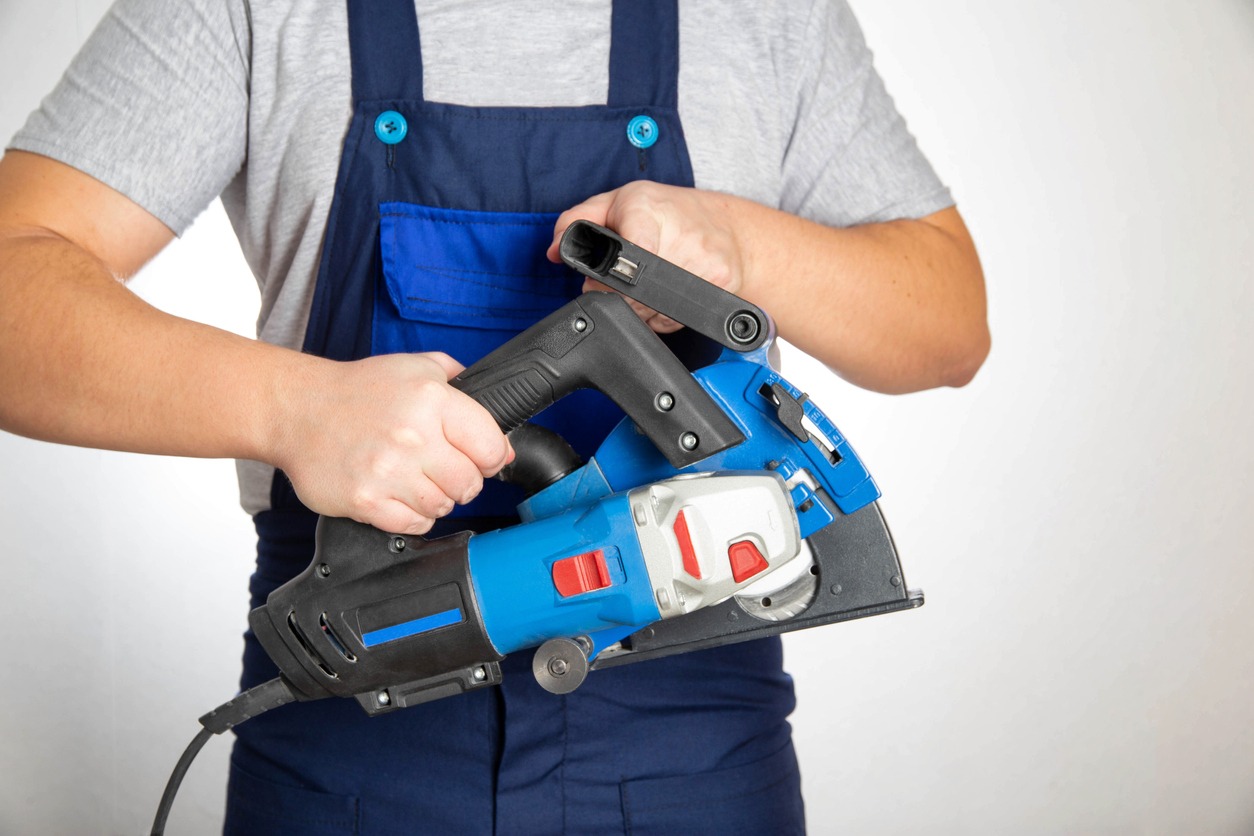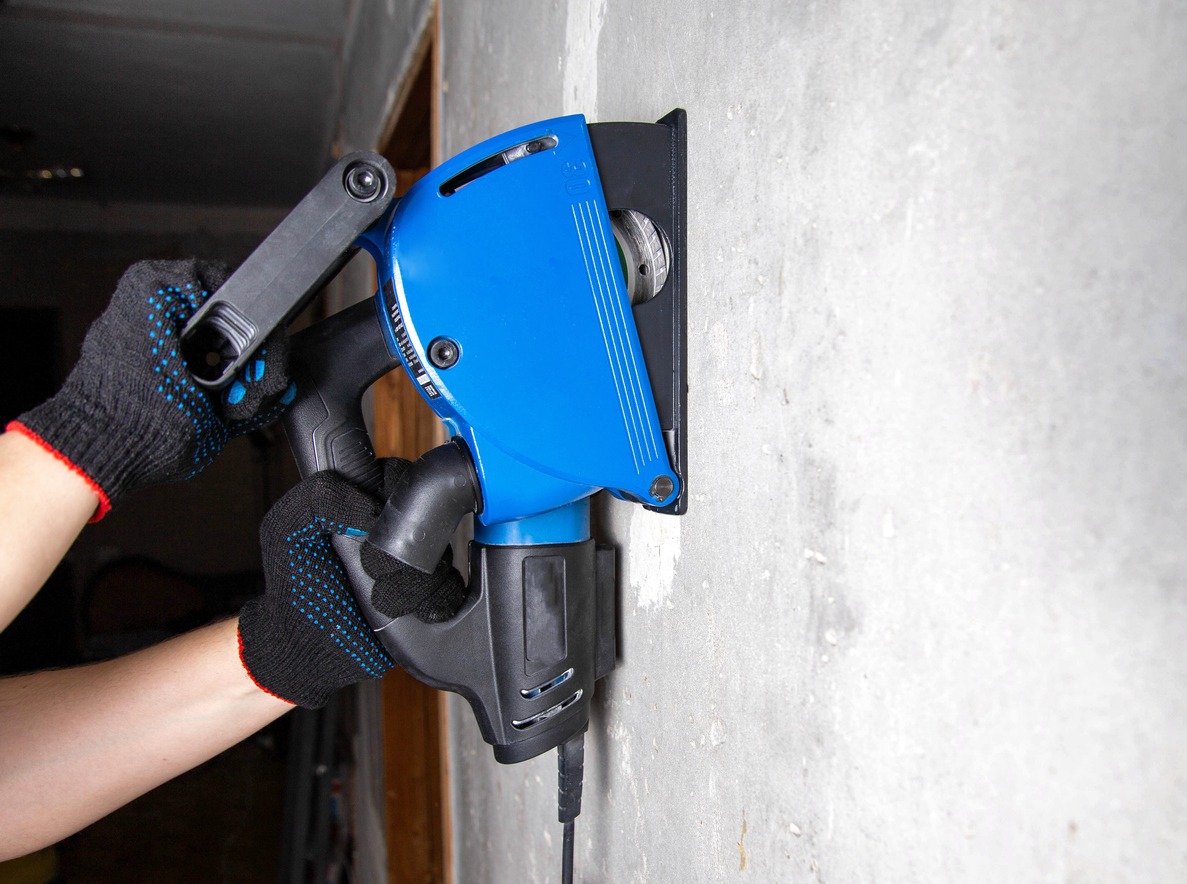Imagine building your new dream house, which you worked and waited for years, and the charm of it is just going to fade due to plumbing pipes and electrical wires installed on walls. Exactly, nobody likes those electrical wires and plumbing pipes “hanging” on the wall. You can cut the bricks with hammers or chisels, but it has complexities of its own. So what to do?
Thanks to technology, we have wall chasers, also known as wall cutters, to tackle the above mentioned problem. You can make clean and smooth cuttings in your walls to install plumbing pipes and electrical wires without disturbing the structure of the premises.
What is a wall chaser? How to use a wall chaser? What are its benefits? What are the common applications of a wall chaser? What things should you consider when buying wall chasers? You can find answers to all these questions in this guide.
What Is A Wall Chaser?
A wall chaser is an electrical power tool primarily used for cutting channels and grooves in the walls to make room for the installation of plumbing pipes or electrical wires. Wall chasers have greatly replaced traditional methods, such as the use of hammers and chasing chisels. That is because wall chasers not only save time and energy, they provide more precision when making channels in the walls.
Another good thing about wall chasers is that they are equally useful for concrete walls and keep the drilling clean. The same neatness and ease are very difficult to achieve through hammers or chasing chisels. Most importantly, a wall chaser can cut narrower gaps which are very difficult with masonry wall saws or hammers.
How Does A Wall Chaser Work?
A wall chaser is a hand-operated masonry machine with a design similar to angle grinders. Wall chasers run in a continuous motion to pave paths (of the desired width and depth) in the wall for installing pipes or wires.
Walls chasers feature heavy-duty masonry blades or abrasive discs to make the cuts. Most of the wall chasers allow you to use one or both cutting discs simultaneously with the help of drive heads. Dual blades are commonly used to make bigger cuts for conduit and water pipes, while single blades would do fine for cables and wires.
Applications and Benefits Of a Wall Chaser
Wall chasers are multi-purpose masonry machines that you can use for different purposes. Here are some common applications and benefits of wall chasers.
1 More Precision and Accuracy
Wall chasers allow you to adjust the blades according to your needs. These sharp blades give neatness and make the cuttings with maximum accuracy. Many models have laser light mounted on the machine, which allows you to keep track of lines or marks you drew on the object earlier.
2 Time Saving—Built For Heavy Duty Use
Wall chasers are heavy-duty machines that can cut deep and fast. As they give more precision, they save a lot of time during wall cutting for pipes and cables.
3 Masonry Cutting
Wall chasers are effective for any type of masonry cutting, such as tiles, bricks, blocks, etc. You can easily use them to cut tiles or bricks for designing or filling the gaps around the doors or walls.
4 Wall Cutting
You can also use a wall chaser for wall cutting to install doors, windows, or any other interior requirements. The best thing is that wall chasers can easily penetrate a wall.
5 Core Drilling
As wall chasers have strong, sharp blades, they are great tools for core drilling to make holes in walls or any substance. That means you can use them for plumbing pipes as well as placing plumbing systems.
6 Concrete Cutting
A wall chaser can cleanly cut concrete substances like concrete bricks, walls, and large concrete slabs. It not only helps in cutting concrete for installation purposes, but you can also use it for making channels and grooves in concrete walls.
7 Smooth Finishing
Wall chasers are a preferred option for professionals because they save time, and most importantly, they can make clean and smooth cuts, no matter if you use them on bricks, plastic, or concrete. After the installation of pipes or cables, you can lubricate the surface with paint or wallpaper for an elegant finish.
How To Choose A Wall Chaser?
Which wall chaser is suitable for you will depend on how you intend to use it. However, taking care of the following commonalities is important.
1 Blades
Blades are one of the essential parts of wall chasers as they pierce through substances. Manufacturers generally use two types of blades:
- Diamond blades
- Abrasive blades
Paying attention to the quality of blades is vital because only high-grade blades can easily penetrate concrete, bricks, screeds, blockwork, or plastic and give smooth and controlled finishes.
2 Cutting Flexibility
How deep and wide a wall chaser can cut depends on the model you use. Cutting depth can vary from one model to another, but it usually ranges from 5 to 75mm with quality products allowing you to select a specific depth using an adjustment knob. Similarly, cutting width can also be adjusted between 10-40mm by simply moving the distance washers installed between disc blades.
3 Dust Extraction System
When you buy a wall chaser, try to buy one that comes with a dust extraction system. They trap the dust that arises during the cutting process and prevents it from polluting the surroundings.
4 Grinding Wheels
Look out for a wall chaser with grinding wheels, as it is not really helpful without them. Grinding wheels make sure you can move the wall chaser easily when cutting.
5 Disc Diameter
A larger disc diameter means a powerful wall chaser and a higher capacity to cut. But larger diameter and a more powerful wall chaser also means more weight, which might not be suitable for light tasks such as just installing a few cables.
6 Number of Discs
Wall chasers can have up to 6 discs. A 2-disc wall chaser works well for most home DIY projects and projects that don’t require a lot of cutting. 6-disc wall chasers are meant for professional, heavy-duty tasks or for those who use it on a regular basis.
Precautions
When you use machinery like wall chasers for masonry cuttings, it generates an enormous quantity of dust, which is harmful to human health. The best way to minimize this health hazard is to use a dust extraction system with wall chasers. You can connect extraction units directly with the wall chasers, and they will suck dust as soon as it is created by the cutting blades. Although the extraction unit sucks the dust, some of it still escapes. Therefore, it is highly advised to use dust masks for better protection.
How to Use a Wall Chaser?
Before using a wall chaser, it is necessary to wear protective gear such as gloves, goggles, ear protection, and dust masks. Also, make sure you read all the instructions and guidance from the manufacturer. The following are the common steps involved in operating a wall chaser.
Step 1: Use Correct Settings
Every model has a specific chase width; start with setting it in the correct manner using guidance from the seller. It may require disc removal, and you may have to change the order of spacers and the discs: more spacers means wider cuts.
Similarly, you have to set the depth of the chase—how deep you intend to penetrate. For example, cutting for a thermostat or pipe needs more depth than cutting for a thin TV cable.
Step 2: Mark Out The Area
It is better to mark out the area you want to cut with the help of a ruler and pencil. It will help you stay on track while cutting through the object. Many wall chasers have LED lasers attached to them. These lasers help you stay on the line you have drawn. Make sure there are no cables or pipes in the area you are going to cut. You can use a cable detector for that.
Step 3: Put The Chaser On The Surface
Turn the chaser on once you set it up. Plunge the chaser at the starting point of the channel and try to sink it into the wall as soon as possible. A wall chaser with grinding wheels will make the movement smoother for you.
Step 4: Finish Chasing
Turn off the chaser and take it off the wall once you cut the channel. There will be deep-cut lines, but the middle part will still be there. You can remove that remaining part of the wall (in the middle) with the help of a chisel or a hammer.
Step 5: Install The Wires
Start installing wires or pipes in the channels. If you intend to remove the wires in the future, it is recommended (especially for appliances) to use plastic capping.
After the successful installation of wires, use a filler or bonding plaster to fill the gaps. If this process takes place during the construction or renovation of a house, replastering will be a better option to fill the gaps.
Conclusion
Wall chasers are a time-saving alternative to hammers and chisels to make wall channels or pathways for installing pipes and cables. They give you clean cuts and, thus, a smooth finishing. When choosing a wall chaser, look out for blades’ quality, dust extraction system, and grinding wheels, and make sure to wear protective gear when operating one.

